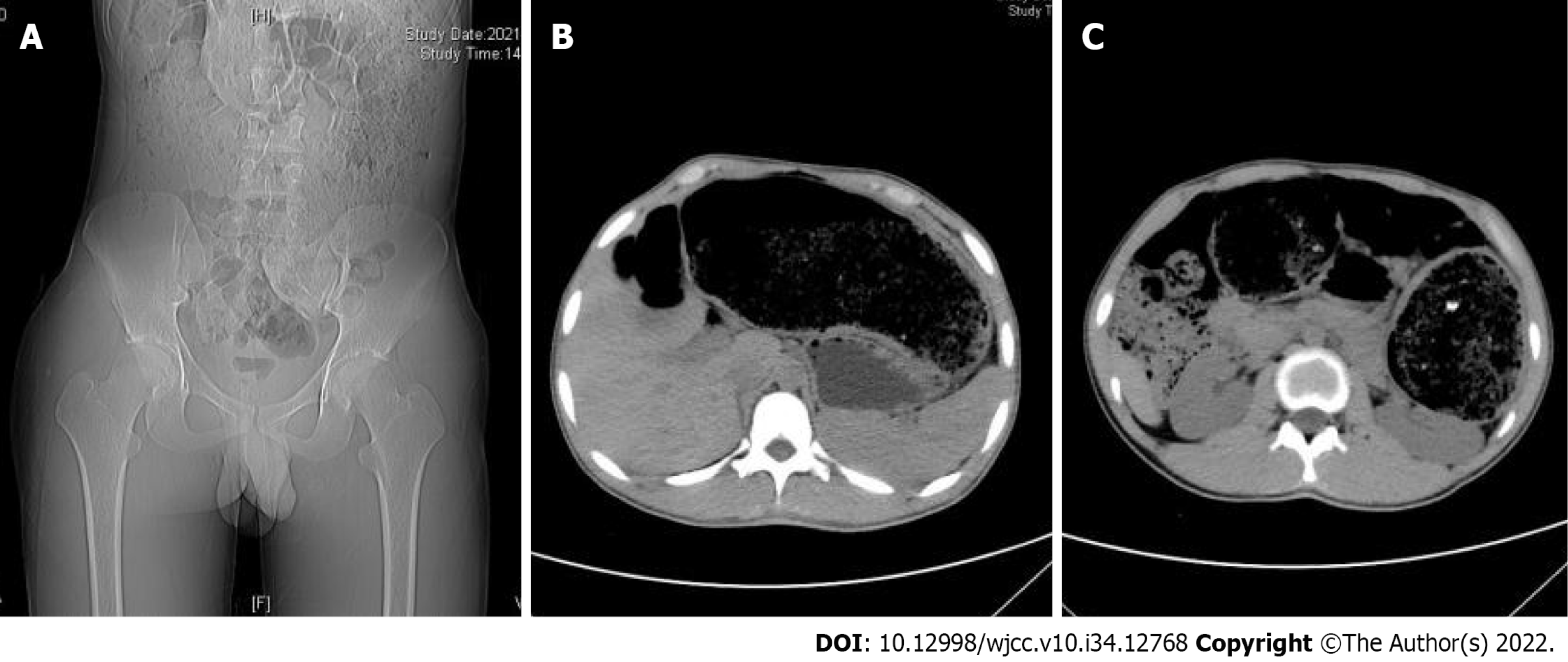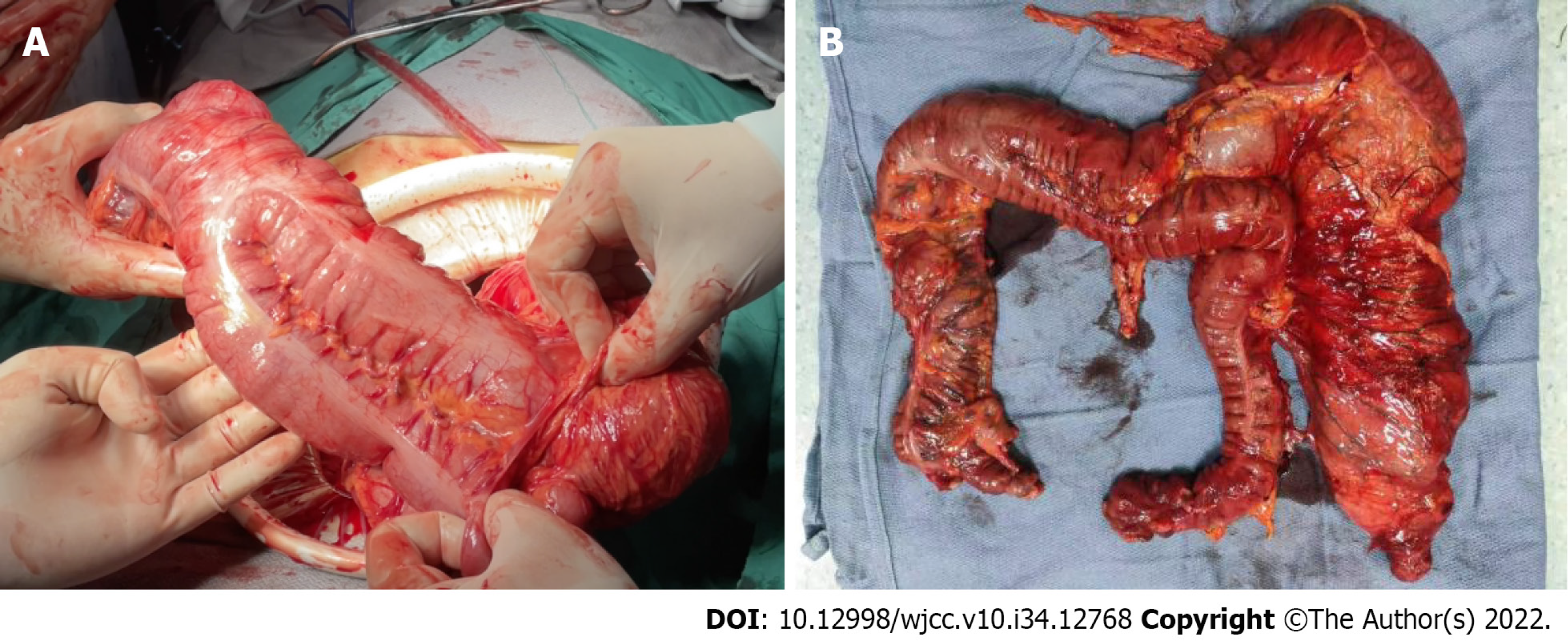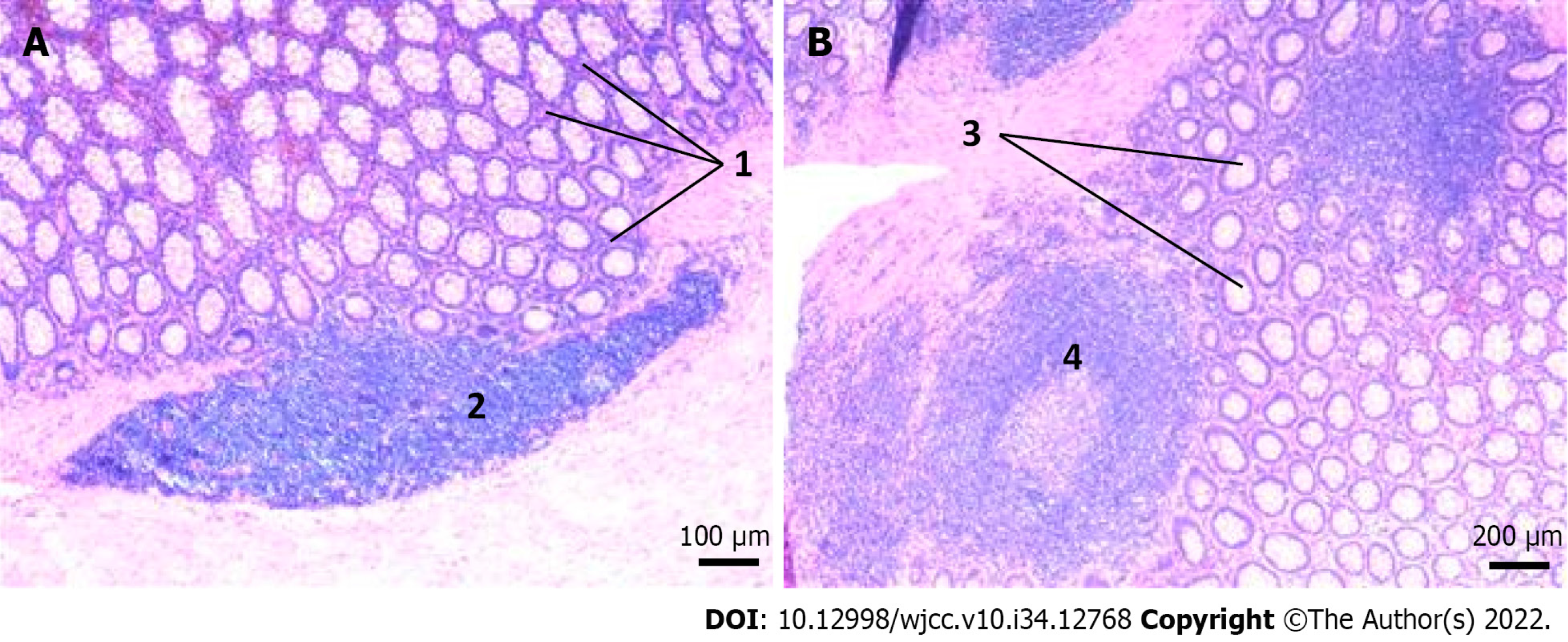Copyright
©The Author(s) 2022.
World J Clin Cases. Dec 6, 2022; 10(34): 12768-12774
Published online Dec 6, 2022. doi: 10.12998/wjcc.v10.i34.12768
Published online Dec 6, 2022. doi: 10.12998/wjcc.v10.i34.12768
Figure 1 Abdominal computed tomography showed significant dilatation of the colonic lumen, dominated by dilatation of the transverse and descending colons, with more contents and adjacent tissue structures under colonic compression.
A: Coronal view; B and C: Axial view.
Figure 2 Colonoscopy images show a large amount of fecal residue in the intestinal lumen, which was dilated (dominated by the dilation of the ascending colon, hepatic region, and transverse colon), and a smooth mucosa.
No obvious structural abnormalities were found. A: Ileocecum; B: Ascending colon proximal to the liver; C: Transverse colon proximal to the liver; D: Descending colon; E: Sigmoid colon; F: Rectum.
Figure 3 Laparoscopic examination revealed that the malformed colon and the native colon received joint nourishment from the middle colic artery.
TC: Transverse colon; DS: Duplication segment.
Figure 4 Duplicated colonic segment and native colon.
A: Intraoperative view: An intimate anatomical relationship between the duplicated colonic segment and native colon; B: Resected colon.
Figure 5 Histopathological analysis of the resected specimen.
Haematoxylin and eosin staining. A: “1” represents pigmentophage proliferation and “2” represents lymphocytes (blue); B: “3” represents colonic gland and “4” represents lymphoid follicle.
- Citation: Zhang ZM, Kong S, Gao XX, Jia XH, Zheng CN. Colonic tubular duplication combined with congenital megacolon: A case report. World J Clin Cases 2022; 10(34): 12768-12774
- URL: https://www.wjgnet.com/2307-8960/full/v10/i34/12768.htm
- DOI: https://dx.doi.org/10.12998/wjcc.v10.i34.12768













